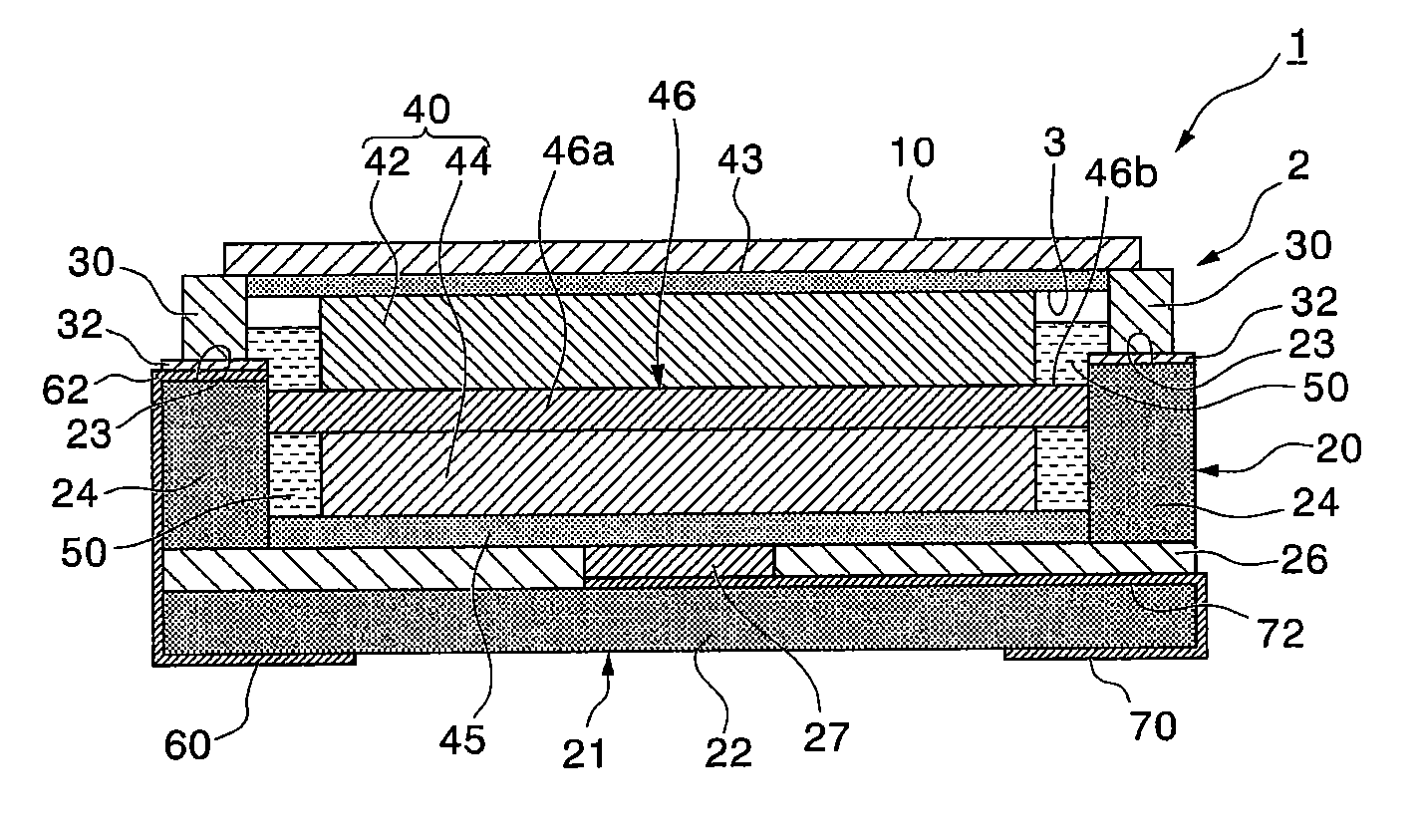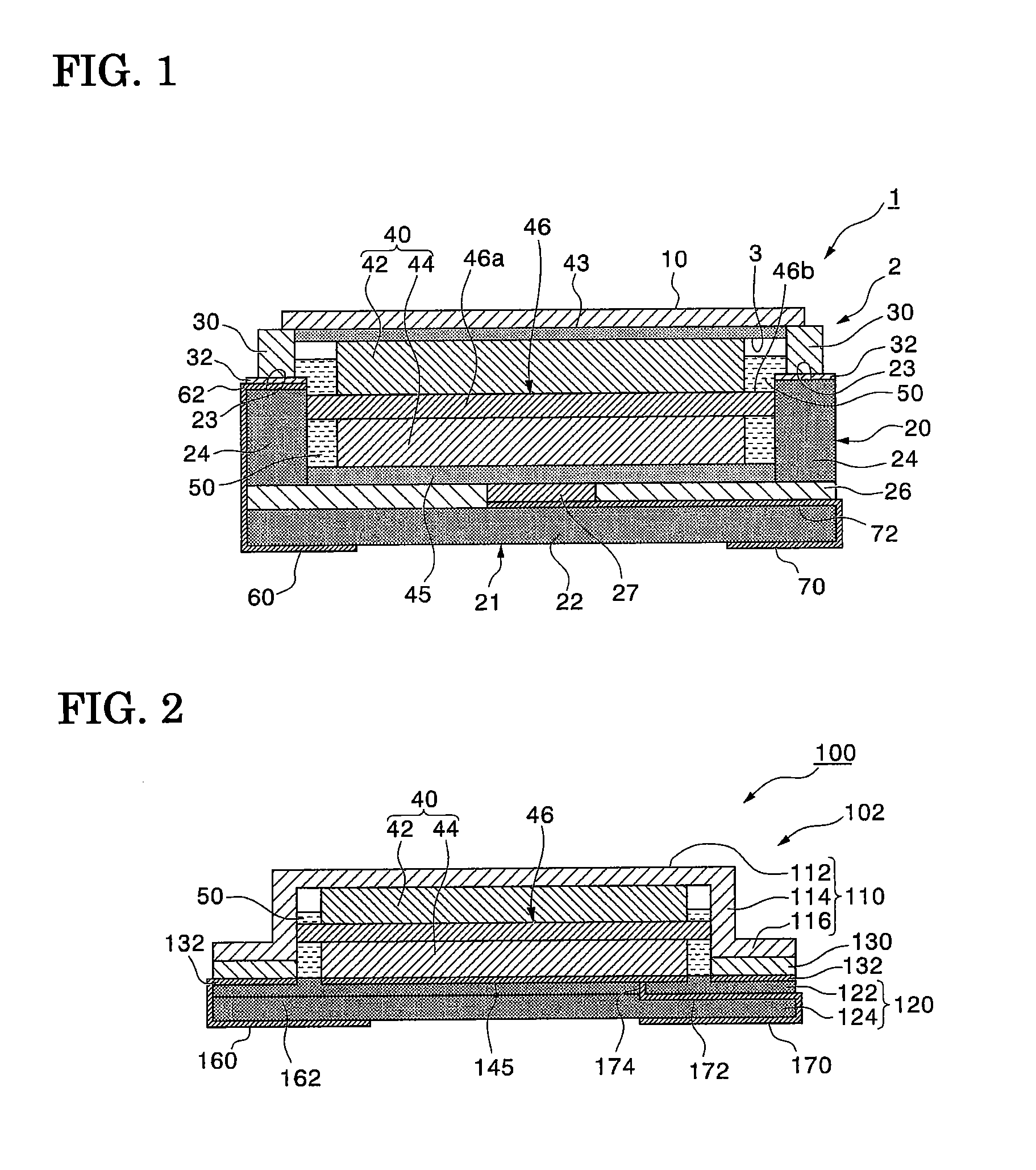Electrolytic solution for electric double layer capacitor, electric double layer capacitor using the same, and manufacturing method therefor
a manufacturing method and technology applied in capacitors, hybrid capacitor electrolytes, capacitors/absorbents, etc., can solve the problems of poor heat resistance of emc and dmc, unstable quality of electric double layer capacitors, and high vapor pressure or bumping, etc., to achieve stable quality
- Summary
- Abstract
- Description
- Claims
- Application Information
AI Technical Summary
Benefits of technology
Problems solved by technology
Method used
Image
Examples
example 1-1
[0134]An electrolytic solution was prepared by mixing sulfolane (in the table, represented by SL) and dimethyl sulfone (in the table, represented by DMS) at a ratio of SL:DMS=8:2 (mass ratio) to prepare a nonaqueous solvent, and dissolving the SBP-BF4 as an electrolytic electrolyte in the nonaqueous solvent so as to have a concentration of 1.5 mol / dm3.
[0135]By using the resulting electrolytic solution, an electric double layer capacitor similar to that shown in FIG. 1 was prepared as described below.
[0136]Commercial active carbon (specific surface area: 1,900 m2 / g, pore volume: 0.85 cm3 / g, fine pore ratio: 4%, medium-sized pore ratio: 95%, and number average pore size: 12 μm (measured by a laser mode)) was extended into a sheet of 0.25 mm±0.05 mm in thickness by applying pressure and then cut into pieces each having a size of 1.7 mm×1.0 mm. The resulting pieces are used as a cathode side electrode and an anode side electrode. The anode side electrode was attached to a lid, which was...
example 1-2
[0141]An electric double layer capacitor was obtained in the same manner as in that of Example 1-1, except that the nonaqueous solvent used was sulfolane:ethylmethyl sulfone (EMS)=8:2 (mass ratio). Then, the low-temperature capacity retention rate was obtained.
example 2-1
[0145]An electric double layer capacitor was obtained in the same manner as in Example 1-2, except that the concentration of SBP-BF4 was 1.0 mol / dm3. Ten electric double layer capacitors thus obtained were applied with a voltage of 3.3 V at an ambient temperature of 70° C. and then stored at 60° C. for 20 days. Subsequently, at an ambient temperature of 24° C., the electric double layer capacitor after the storage was discharged at a constant current of 5μA (discharge current) until the voltage reached 2.0 V. Then, the service capacity was calculated and the average value was defined as a high-temperature capacity. The high-temperature capacity thus obtained and the initial capacity obtained separately were substituted into the following equation (III) to calculate a high-temperature capacity retention rate.
High-temperature capacity retention rate(%)=high-temperature capacity / initial capacity×100 (III)
PUM
 Login to View More
Login to View More Abstract
Description
Claims
Application Information
 Login to View More
Login to View More - R&D
- Intellectual Property
- Life Sciences
- Materials
- Tech Scout
- Unparalleled Data Quality
- Higher Quality Content
- 60% Fewer Hallucinations
Browse by: Latest US Patents, China's latest patents, Technical Efficacy Thesaurus, Application Domain, Technology Topic, Popular Technical Reports.
© 2025 PatSnap. All rights reserved.Legal|Privacy policy|Modern Slavery Act Transparency Statement|Sitemap|About US| Contact US: help@patsnap.com



